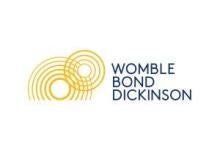The U.S. Patent and Trademark Office (USPTO) recently announced the creation of the Patent Fraud Detection and Mitigation Working Group. The working group is designed to identify and address threats to the patent system as well as to weed out improper activity in patent applications and reexamination proceedings. USPTO officials believe that these efforts will reduce pendency time for patent applications and preserve USPTO resources.
In particular, the working group is tasked with:
- Addressing mistakes in fee certifications and assertions. To date, the USPTO has mailed more than 2,200 fee deficiency notices in patent applications in response to false micro entity certifications as well as 68 notices responding to false small entity certifications. Patent Applicants and practitioners are reminded that only entities that meet certain requirements can claim fee discounts as a small entity or micro entity, and an incorrect claim of small entity status or micro entity status can jeopardize the validity of a patent. Details regarding the requirements for establishing small entity status and micro entity status can be found here.
- Identifying and reviewing potential misrepresentations to the USPTO, including for false signatures, and using the administrative sanctions process to address misrepresentations where appropriate. Since June 2023, the USPTO has terminated more than 3,300 applications due to false signatures. Patent Applicants and practitioners are reminded that, pursuant to 37 CFR 1.4, a signer’s signature on any paper submitted to the USPTO must be personally made or inserted by the signer and cannot be made by another at the signer’s direction. This applies to both handwritten signatures and S-signatures.
- Preventing non-practitioners from engaging in the unauthorized practice of law. Except for pro se representation, a patent Applicant can only be represented in a patent matter before the USPTO by individuals specifically authorized to do so. 37 CFR 11.10(a). With some exceptions, this generally requires a registered patent practitioner who has, among other things, passed the patent registration examination. 37 CFR 11.7. Representing another before the USPTO regarding a patent matter is not limited to signing and filing papers in a patent application, but can also include drafting the patent application, drafting amendments and replies to communications from the USPTO, and giving advice to a client in contemplation of filing a patent application or an amendment or reply in a patent application. 37 CFR 11.5(b)(1). Patent Applicants are encouraged to obtain representation regarding patent matters only from authorized patent practitioners.
- Monitoring and investigating otherwise suspicious filings.
- Serving as the main point of contact within the USPTO for reporting potential threats to the patent system.
The USPTO has introduced a new webpage serving as a centralized hub to keep the public informed about emerging threats in patent applications and reexamination proceedings. Additionally, the USPTO will share data outlining its mitigation efforts.
Click here to visit the new USPTO Patent Fraud Detection and Mitigation website.




 />i
/>i
